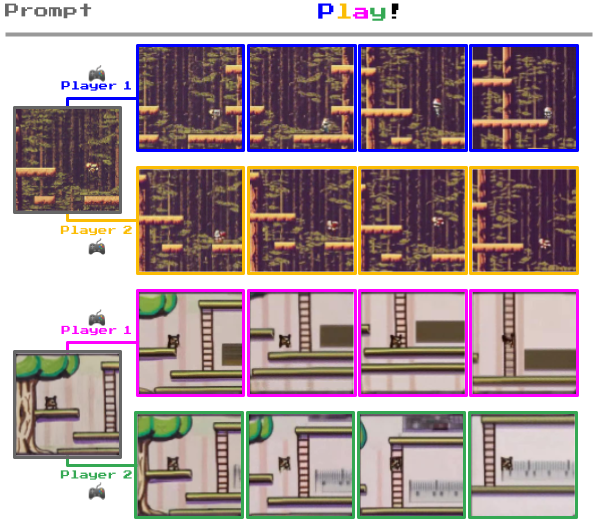For years, the gaming industry seemed like an unstoppable juggernaut, with revenues rising to stratospheric heights on the backs of ever-more-immersive titles and the explosion of mobile gaming.
However, as we enter the mid-2020s, there are growing signs that the industry is reaching a plateau.
After the pandemic-fueled boom of 2020 and 2021, global gaming revenues dipped in 2022. That contraction gave way to tepid growth of just 0.5% in 2023, bringing the worldwide gaming market to around $184 billion, according to data from Newzoo.
While still an impressive figure, it’s a far cry from the double-digit percentage growth the industry had come to expect.
This slowdown is even more pronounced in mature markets like North America and Europe, where key sectors such as console and mobile gaming are approaching saturation.
Mobile gaming revenue, once the rocket fuel propelling the industry’s ascent, actually declined in 2022 and is only now beginning to stabilize.
Revenue stagnation is only part of the story, however. Even as growth slows, the cost of developing top-tier AAA games continues to soar.
Budgets for marquee franchises like Call of Duty and Grand Theft Auto now routinely exceed $300 million. Some titles are nearing combined development and marketing costs of $660 million, a staggering sum that would have been unthinkable a decade ago.
These ballooning budgets are forcing studios to play it safe, leaning heavily on established franchises and proven formulas rather than taking risks. Innovation is taking a backseat to iteration.
There’s also evidence that people are starting not to enjoy games anymore, with sentiment towards the year’s releases dropping from 3.4/5 in 2014 to 2.9/5 in 2021.
Even the buzz of the latest CoD and FIFA games seems to be waning. There are groundbreaking titles like Elden Ring, but this took some five years to make – it’s a once-in-a-generation title rather than the game of the year.
Layoffs and labor pains
The human toll of this financial squeeze is becoming more prominent, too. Layoffs have rippled through the industry, with over 10,500 game developers losing their jobs across more than 30 studios in 2023 alone.
Giants like Epic Games and Bungie weren’t spared, as declining revenues and user fatigue with aggressive monetization models took their toll.
Simultaneously, the industry is grappling with a rising tide of labor activism as workers push back against the notorious “crunch culture” that has long plagued game development.
The demand for better pay, saner hours, and more equitable treatment is putting further pressure on studios struggling financially.
The indie incursion
Amid tensions in AAA studios, indie developers are making a greater impact in the industry – a powerful counterpoint to mainstream game development.
In 2024, indie games are claiming five of the top ten spots on Steam’s highest-grossing list. Titles like Palworld ($6.75m budget, 25 million units sold) and Enshrouded are resonating with players, showcasing the potential for indie games to achieve commercial success on par with AAA releases.
This indie surge is part of a larger trend, with the market share of indie games on Steam growing from 25% in 2018 to 43% in 2024.
Even in years with highly anticipated AAA launches, like 2023’s Baldur’s Gate 3 and Spider-Man 2, indie revenue has held steady, indicating a robust and growing audience for these titles.
The rise of indie games reflects a growing appetite among some players for novel experiences and creative risks.
While AAA development often focuses on established franchises and proven formulas, indie developers push boundaries and experiment with new ideas.
Meanwhile, tools like Unity and Unreal Engine have made high-quality game development more accessible, while digital marketplaces like Steam provide a platform for indie games to find an audience.
And this brings us to AI.
By automating and streamlining virtually any and every aspect of game development, AI could further level the playing field, allowing small teams to create experiences that rival those of major studios.
The AI paradigm shift
AI’s potential to disrupt gaming has been losing discussed but is no longer just theoretical.
Recent breakthroughs like Google’s GameNGen and DeepMind‘s Genie provide a glimpse into a future where AI is a driving creative force in game development. GameNGen can generate entirely playable levels of classic games like DOOM in real-time, while Genie can conjure up interactive 2D environments from simple images or text prompts.
These breakthroughs are part of a longer trend of AI-driven innovation in gaming, though the industry is still very young.
In 2018, for example, World Models demonstrated how an AI could learn to play video games by building an internal model of the game world.
A year later, DeepMind‘s AlphaStar showcased the power of reinforcement learning by mastering the complex strategy game StarCraft II, even competing against top human players.
Representing the cutting-edge of this field today, GameNGen was trained on actual DOOM gameplay footage, allowing it to internalize the game’s mechanics, level design, and aesthetics. It then uses this knowledge to generate novel levels on the fly, complete with coherent layouts and gameplay flow.
Conversely, Genie uses a foundation model to generate interactive environments from more freeform inputs like sketches or descriptions. By training on a diverse range of game genres and visual styles, Genie can adapt to create content across a broad spectrum of aesthetics.
Genie, a generative model, can function as an interactive environment, accepting various prompts such as generated images or hand-drawn sketches. Users can guide the model’s output by providing latent actions at each time step, which Genie then uses to generate the next frame in the sequence. Source: DeepMind via ArXiv (open access).
Under the hood, these AI systems are powered by deep neural networks, which are becoming miniature game engines unto themselves, capable of generating complete, playable experiences from scratch.
Essentially, the game world is created inside the neural network itself. The game world isn’t built using traditional programming techniques.
Instead, it’s generated by a deep neural network that has learned the rules, patterns, and structures of game design through exposure to vast amounts of training data. Rather than building game worlds by hand, piece by piece, developers could simply describe or sketch what they want, and let the neural network fill in the details.
Moreover, because the game world is generated by a neural network, it has the potential to be far more dynamic and responsive than traditional game environments. The same network that generates the world itself could also be used to simulate NPC behaviors, adjust difficulty on the fly, or even reshape the environment in real-time based on player actions.
With AI handling the heavy lifting of world-building and level design, the optimistic narrative is that developers will be free to focus on higher-level creative decisions, such as developing art, concepts, and storylines.
While jobs would be placed at risk, AI could surely be the major level-up the gaming industry is looking for.
Empowering players, disrupting business models
The real revolution will kickstart when these AI tools are placed directly in the hands of players.
Imagine a world where gamers can conjure up their dream titles with a few simple prompts, then jump in and start playing instantly.
Want to mash-up the neon-soaked cityscape of Cyberpunk 2077 with the frenetic combat of DOOM Eternal? Just describe it to the AI and watch your vision come to life. The line between developer and player blurs. Games become living, breathing entities, evolving in response to the collective creativity of their communities.
This democratization of game creation could birth entirely new genres and upend traditional notions of what a game can be.
We could see a shift toward platforms that provide AI tools for creation and curation, taking a cut of user-generated content sales or charging for access to premium features.
For established studios, it would undoubtedly represent both an existential threat and an unprecedented opportunity.
Those who cling to the old ways risk being left behind. Those who embrace the new paradigm stand to capitalize.
Of course, realizing this vision won’t be without its challenges. Issues of content moderation, intellectual property rights, job displacement, and revenue sharing will all need to be confronted.
However, the wheels are in motion. As the technology continues to evolve, we can expect to see more and more examples of AI not just assisting in game development, but fundamentally reshaping what games can be.





